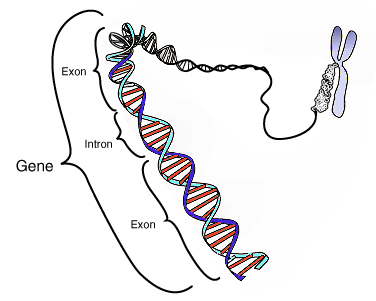introns

An intron is any nucleotide sequence within a gene that is removed by RNA splicing to generate the final mature RNA product of a gene. The term intron refers to both the DNA sequence within a gene, and the corresponding sequence in RNA transcripts.
Sequences that are joined together in the final mature RNA after RNA splicing are exons. Introns are found in the genes of most organisms and many viruses, and can be located in a wide range of genes, including those that generate proteins, ribosomal RNA (rRNA), and transfer RNA (tRNA). When proteins are generated from intron-containing genes, RNA splicing takes place as part of the RNA processing pathway that follows transcription and precedes translation.
The word intron is derived from the term intragenic region, i.e. a region inside a gene. Although introns are sometimes called intervening sequences, the term intervening sequence can refer to any of several families of internal nucleic acid sequences that are not present in the final gene product, including inteins, untranslated sequences (UTR), and nucleotides removed by RNA editing, in addition to introns.























